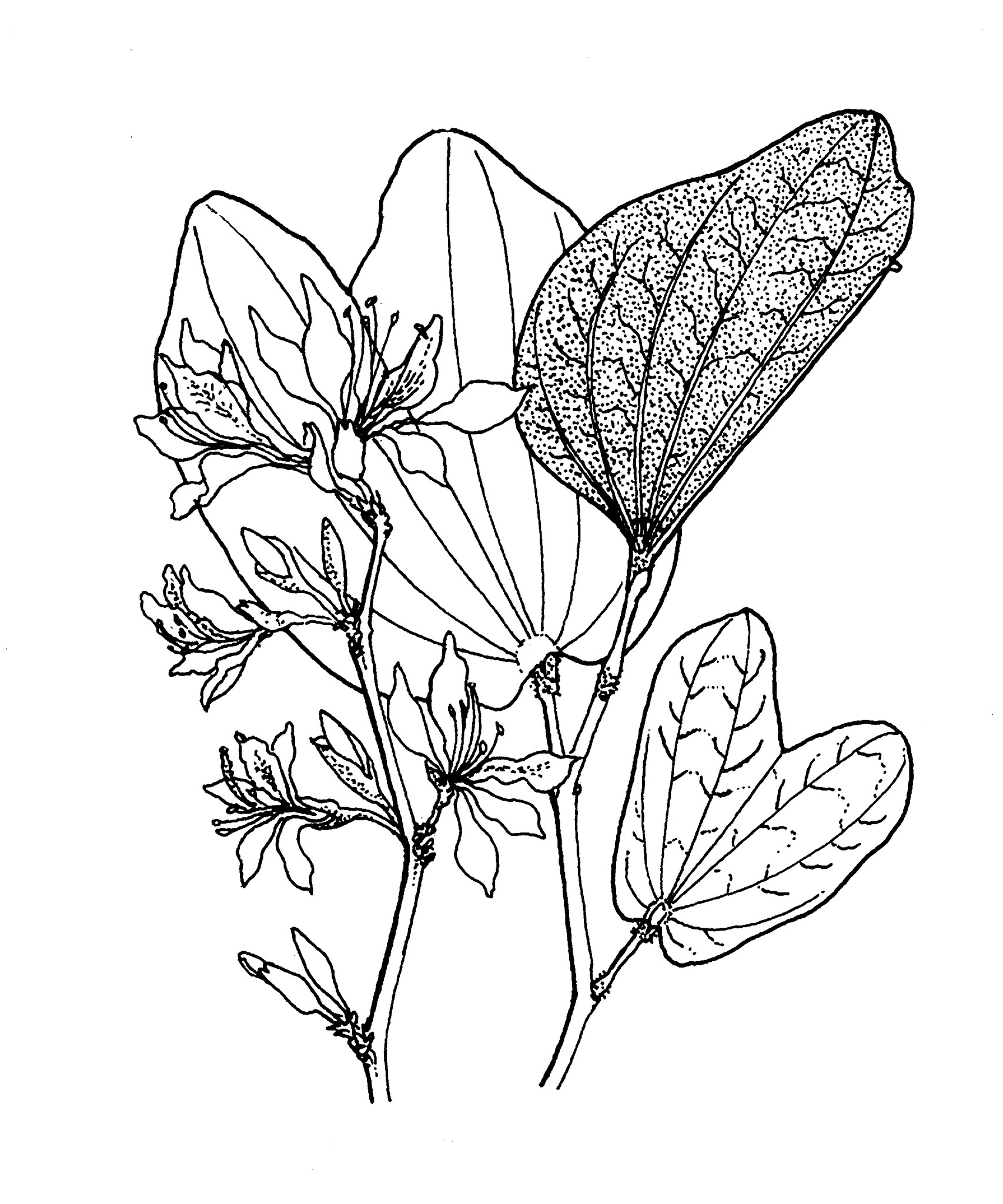
Medium-sized more or less deciduous tree, in cool climates 5-9 m tall, branching near the base into ascending branches. Leaves alternate, 2-lobed, 8-12 cm long, 5-6 cm wide, with mostly 11 veins radiating from the base. Leaf stalk thick, to 4 cm long, with a swollen base. Flowers axillary or terminal, in clusters of 3-6, each flower about 8 cm wide, faintly scented; spring to early summer. Petals pink with red and yellow markings, with darker veins and paler at the base, the lowermost petal larger and darker. Fruit pods 15-18 cm long.
Rarely grown in the south and better suited to warmer districts, a common street tree in Brisbane. The hardiest of the cultivated species, surviving mild frosts in the Blue Mtns, NSW.
var. candida Roxb. is white-flowered, fragrant and has one petal yellowish green. Generally a smaller tree than the type.
B. × blakeana Dunn. is a hybrid, B. purpurea × B. variegata, grown for the prolific larger and darker coloured flowers. B. purpurea L., Butterfly Tree, from the Himalaya, Burma and S China is an evergreen or partly deciduous tree generally no more than 6 m tall with a broad crown. Similar to B. variegata but a smaller, less frequently grown tree with more deeply divided leaves and 3(4) fertile stamens. The explosive fruit dehiscence has thrown seed about 15 m. There is a white form, 'Alba'.
Himalaya, S China, Malaysia.
Source: (2002). Caesalpiniaceae. In: . Horticultural Flora of South-eastern Australia. Volume 3. Flowering plants. Dicotyledons. Part 2. The identification of garden and cultivated plants. University of New South Wales Press.
